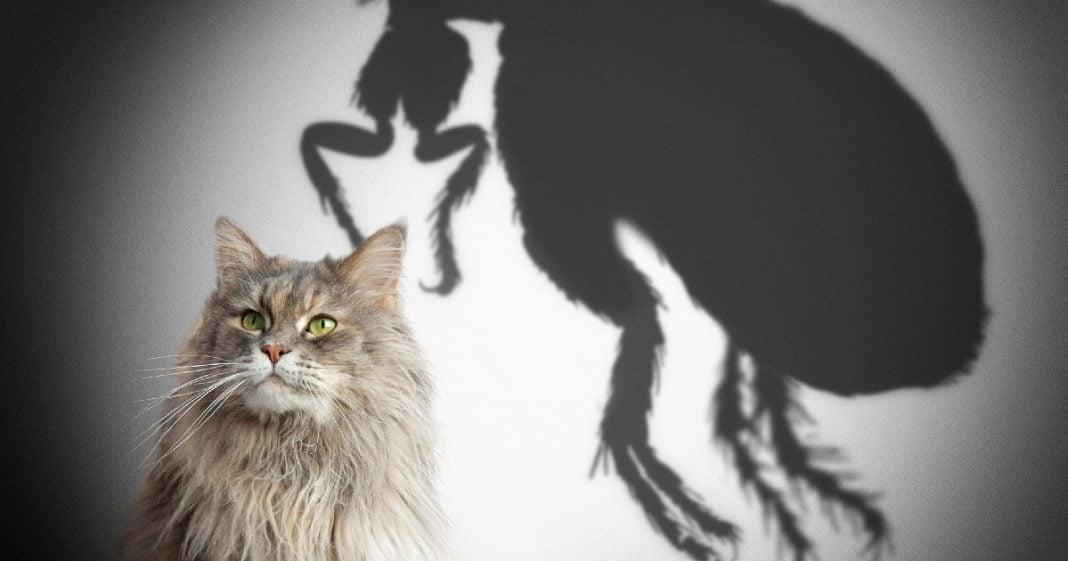In many parts of the country, winters can stay mild or even warm. While it’s fun to not have to wear twenty layers of clothes to survive, it means a longer and more abundant season for heat-loving pests like fleas. And fleas are a problem! But the best way to solve a problem is to first understand it.
Knowing how your cat can get fleas, what the implications are, and how a flea’s life cycle works can help you make informed decisions about the steps you’ll need to take to get rid of them once and for all. Here are 15 must-know facts about fleas. Find more resources at the end of the article.

15 Facts About Fleas Every Cat Parent Should Know
#1 – A flea’s live happens in four stages– egg, larva, pupa, and adult. Unless we’re paying very close attention, it’s usually the adult fleas that grab our attention (because they’re biting us– ouch!)
#2 – Fleas are parasites that survive by feeding off the blood of their host (whether that’s you, your cat, or another creature).
#3 – There are more than 2,000 known species and sub-species of fleas. But in the U.S., the “cat flea” is almost always the one you’ll experience.
#4 – Once an adult flea emerges from the pupal stage, it has about a week to find a host to feed off of. Without blood in the first week, the adult flea will die.
#5 – If all goes well though, an average flea lives for about 2-3 months (considering all four stages of life).
#6 – Despite how it may seem by how quickly they can zoom away if you try to catch one, fleas don’t have wings.
#7 – Adult fleas have six legs. The back ones act as springs to allow the flea to jump very, very far.

#8 – Those spring-like legs allow a flea to jump 8 inches high. That may not sound too impressive until you consider the fact that 8 inches is about 150 times a flea’s height. To put it into perspective, that’s like you jumping over a tall building.
#9 – Adult fleas are tiny! When fully grown, they’re only 1/16 – 1/8 of an inch!
#10 – An adult female flea will begin to lay eggs within a day or two of consuming her first blood meal.
#11 – An adult female flea consumes an amazing amount of blood every day– about 15 times her body weight!
#12 – Though fleas certainly prefer more frequent meals, an adult flea can live for more than 3 months without a blood meal.
#13 – A female flea lays about 2,000 eggs over the span of her short life. This should help you understand how a flea problem can get out of hand so quickly.
#14 – In almost every species of flea (and certainly in the common cat flea), the females are larger than the males.

#15 – Female fleas usually lay their eggs directly on their host. The eggs aren’t sticky though, so they will fall off and scatter throughout your home as your pet moves around.
#16 – Your indoor cat can get fleas! They’re so tiny that they can easily squeeze through small holes in your home. They have also been known to hitchhike inside on shoes, socks, and the legs of pants.
#17 – Fleas can be dangerous to your cat. Some cats are allergic to fleas and have painful reactions to flea saliva. Even without an allergy, fleas can cause anemia and spread other parasites like tapeworms.
Want to learn more about fleas and how to protect your home and cat? Read these:
Does Your Cat Have Fleas? Here’s What You Need To Know
My Indoor Cat Doesn’t Have Fleas, Right? What Do I Need To Know?
5 Summer Dangers And How To Protect Your Cat
6 Reasons Why Your Cat May Be Itchy




